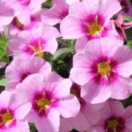The winter is when you stop thinking of your lawn. But for both cool- and warm-season your lawns need care. Here we are discussing some tips for winter lawn and landscape care which you need to do during winter that makes your lawn always beautiful.

Dec 12, 2022
You all are the best
Nov 11, 2022
They are doing a good job getting everything under control.
Nov 8, 2022
Great service with great staff.
Nov 14, 2022
All good
Nov 8, 2022
BestYard have done our fall leaf clean up for a few years now and we really appreciate this service!! We have a dozen trees in our small backyard so over the years we have more and more leaves as we get older. BestYard are good at communication and getting the job done!
Nov 2, 2022
It was quick and our lawn looks great!
Nov 8, 2022
Wonderful job, team. The fall yard cleanup was perfect and the house looks great again!
Oct 27, 2022
Excellent service!
Oct 26, 2022
Thanks Weed Man for aerating our lawn! The guys were fast, friendly, respectful of directions and most of all, did a great job of taking care of readying our lawn for winter and into the spring. Thanks so much for texting the day before to remind us of appointment!
Oct 25, 2022
Excellent customer service!!

The winter is when you stop thinking of your lawn. But for both cool- and warm-season your lawns need care. Here we are discussing some tips for winter lawn and landscape care which you need to do during winter that makes your lawn always beautiful.

There is always some secret to successful gardening. But this is a fact that soil always plays an important role to make your garden beautiful. Soil serves many important functions in an ecosystem. In your landscape, soil is the medium in which your plants grow. In this blog we are discussing five functions at the same time that soil will perform.

Click “DO IT FOR ME” to request a FREE quote.

Photo courtesy National Garden Bureau
Just as 2018 is the year of the dog in the Chinese calendar, 2018 also has a designated bulb, perennial, annual and edible. These “2018 Year of” plants present growing opportunities for Colorado gardeners.
All the 2018 designees by the National Garden Bureau are quite growable in Colorado gardens – even if your garden plot is as small as a container on your patio.
Tulips are members of the lily family and have been cultivated for 400 years. Though their native home spans southern Europe, the eastern Mediterranean, North Africa and Asia, they do find a good home in Colorado because it offers the cool temperatures the bulbs need during for their winter dormancy.
Say it with tulips. Plant or give purple tulips to show loyalty, red to show love and white to say, “I’m sorry.”
Though saying it may be more difficult to roll of your tongue than its big brother petunia, calibrachoa offers a broader range of annual color. It is often called a “mini petunia,” but it is not the same.
Calibrachoa is best suited to container gardens where it can spill over the edges like its Brazilian ancestors spilled over the edges of mountain cliffs. It is somewhat drought tolerant and prefers well-drained soils.
In the language of flowers, coreopsis means “always cheerful” which is exactly what its bright color brings to a perennial garden. Usually seen in yellow and gold, many species contain red, bronze and burgundy. It blooms throughout the spring and summer and finds a good home in Colorado’s growing conditions.
Coreopsis is an American native with at least 80 known species.
The common beet is growing in popularity as a super food. Beets are high in fiber, vitamins A and C and have more iron than most vegetables. They are also rich in antioxidants and minerals. More recently, baby beet leaves have become popular as a salad ingredient.
For vegetable gardeners, beets make a great and healthy addition to the mix of edibles. Plant them as seeds during the cooler shoulders of the growing season as they don’t thrive during the heat of summer.
Click “DO IT FOR ME” to request a FREE quote.
Colorado State University horticultural professors recommend winter watering when the daytime temperatures are above 40 degrees F. Do this twice a month during our fall and winter drought season from October through March. For large trees, apply water to the most critical parts of the root zone within the drip line of the tree to keep the roots from drying out.

Has the grueling summer heat taken a toll on your yard this year? Is your lawn stressed or have weeds, insects, or disease? Or, is your lawn just getting by, but not the best yard in your neighborhood?
BestYard.com has produced “7 Secrets to a Beautiful Yard this Fall”.
This guide will tell you “how and when” to help your lawn recover from the summer stress, create a beautiful lawn this fall, prepare it to survive our harsh winter, and thrive next spring.
Weeds compete with grass for water, space, light and nutrients. They are very aggressive and can easily take over a lawn if not kept in check. Protect your investment with a customized weed control program that will help eliminate unsightly broadleaf weeds.
Weed control – combined with regular fertilization, proper mowing and correct watering practices – will keep your grass thriving while weeds disappear.

Use a 65% slow release granular fertilizer that feeds your lawn over 6 – 8 weeks vs. cheaper liquid or Big Box store granular fertilizer that quickly releases the nitrogen over 7 – 10 days.
This will avoid burning your lawn during the last of summer making stress conditions worse.

The stressful combination of hot, dry weather and a season full of foot traffic leaves your soil compacted and making it difficult to breathe.
To alleviate this problem CSU professors recommend fall aeration to open pockets of air to allow your turf’s root system to breathe, grow deeper, and absorb nutrients and water. Over seeding is often done with aeration.

Fall over seeding helps your turf to become thicker and choke out weeds that grew during the grueling summer.
The new growth will fill in areas where the grass is thinning or where there are bare spots. The best time to over seed is with aeration because much of the seed will go into the plug holes from aeration.

Because your lawn is recovering from a grueling summer it is more vulnerable to winter damage. Most of lawn care experts agree that the early winter application of fertilizer is the most important one for lawns.
It promotes a healthy, thriving root system, store vital nutrients for the winter and early spring, and aids the cold hardiness of your turf from winter damage.

Do this if your lawn or your neighborhood had mite damage in 2017. This is one area where an ounce of prevention is worth more than a pound of cure. Mites can cause considerable damage to your lawn if left undiagnosed and not treated in 3 weeks or less.
Almost all serious injury by grass mites are related to winter drought stress. South-facing hills with sun exposure are typical areas where turf damage can be expected.

Take time to put your yard and landscape “to bed” in fall, your lawn will reap the rewards.
Give your lawn a healthy start next spring by managing these fall tasks.
OF COURSE we would love to care for your yard.
BUT, whether we provide for your yard or not, we want it to be the best it can be.
THEREFORE, we want to provide you the best professional advice for your lawn care in this guide.
THIS IMPROVES our neighborhoods, community, and environment.
If you have some items on your “to-do” list and want to move some to someone else’s “to-do” list call 720-851-7550 or click Do It For Me to discuss your lawn care needs or request your FREE lawn care quote.
Click “DO IT FOR ME” to request a FREE quote.
6 Secrets to a Lush, Green Lawn!